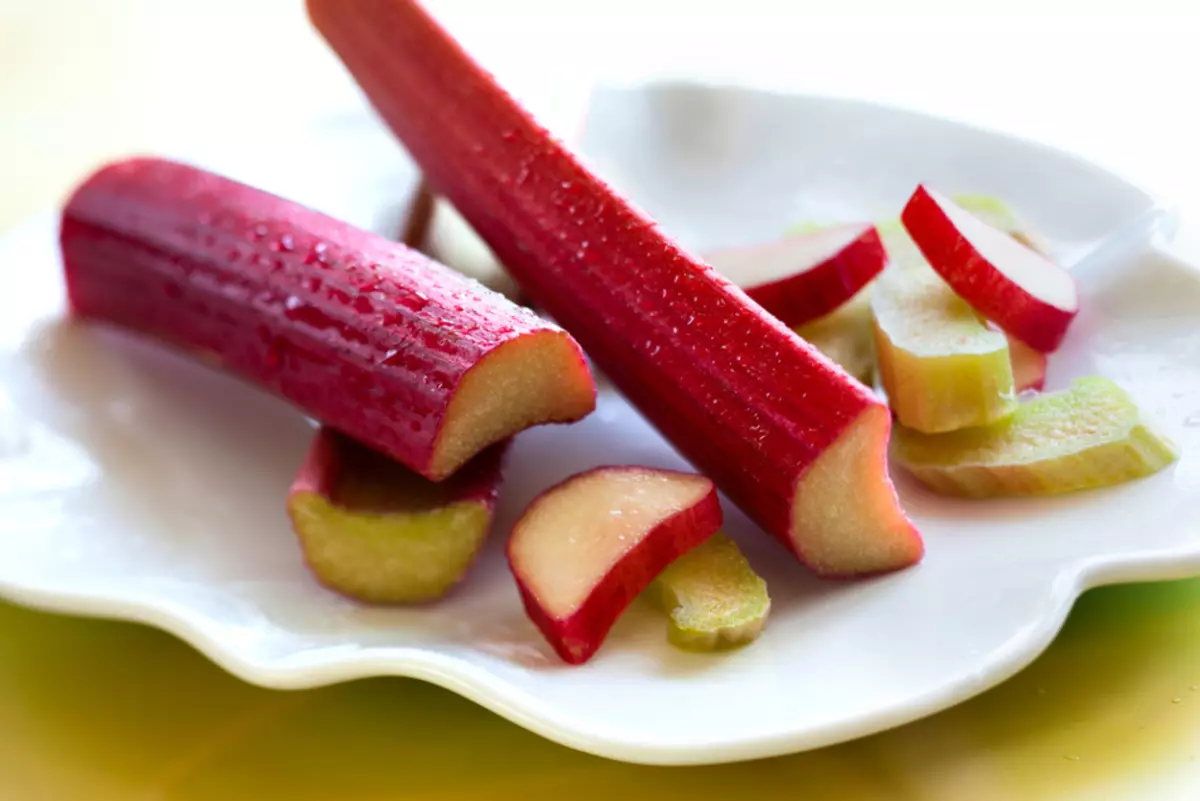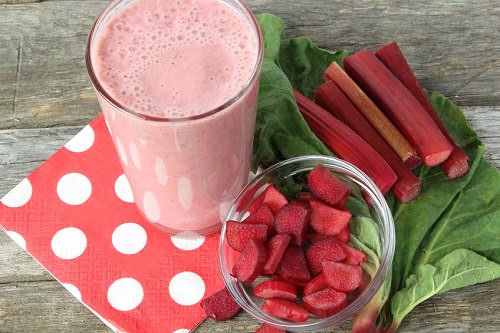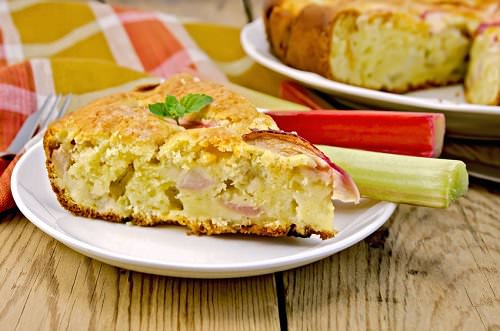7 Fantastic Reasons to Eat Rhubarb All Year Long
Rhubarb is going to be a new superfood in the nearest future. It’s a nutritional powerhouse that provides a great number of fantastic health benefits. In a warm climate, rhubarb can grow all year round, while in a colder climate it starts growing early in the spring. Many people grow rhubarb in large pots at home since the plant is easy to grow and it can grow for about 10-15 years. Some people grow rhubarb in heated greenhouses too. We usually use rhubarb in pies, smoothies, pastries, salads and soups, but it can also be eaten raw (many don’t know about it!). Rhubarb is a bit tart so it’s better to combine it with sweet berries or any other fruit. If you’d like to buy a sweet rhubarb, look for the reddest stalks – they are much tastier than green stalks, pale pink stalks and pale red stalks.
Rhubarb is high in vitamin C, B-complex vitamins, vitamin K, potassium, calcium, manganese, and many other essential vitamins and minerals that the body needs to function at the highest level. Rhubarb also contains powerful antioxidants such as anthocyanin and lycopene, which are good for your overall health. As an added bonus, rhubarb is low in fat and calories, which makes it a great diet-friendly food. Take a look at the most important reasons to eat rhubarb all year long.
1 Good for your bones and teeth
Due to its high calcium content, rhubarb helps to keep your bones and teeth strong and healthy all year round. Eating it regularly prevents tooth loss and the softening of bones. Calcium deficiency is a common problem these days so it’s very important that you incorporate more calcium-rich foods into your eating plan.
2 Good for your eyes
The red stemmed rhubarb is an excellent source of vitamin A, which is crucial for healthy eyes. It contains beta-carotene, lutein and zeaxanthin that help to keep your vision sharp and reduce your risk of developing age-related macular degeneration. I recommend drinking a rhubarb smoothie every time you spend a lot of time in front of your computer. Adding rhubarb to any other smoothie is a great option too.
3 Support a healthy immune system
Rhubarb is one of the best sources of vitamin C that helps to boost immune system. During the spring season the immune system tends to be weaker so including some Vitamin C rich foods in your daily diet is a must. Moreover, vitamin C is a key nutrient in collagen production. This means, eating rhubarb may help you prevent premature aging and look and feel younger… longer.
4 Good for your heart
Rhubarb is very low in calories and fat – a cup of diced rhubarb contains around 26 calories and less than a gram of fat. Plus, rhubarb contains potent antioxidants such as anthocyanin and lycopene which help to reduce your risk of heart disease. Sure, if you don’t know how to cope with stress, eating rhubarb won’t improve your heart health. Keep your emotions under control, eat healthy and exercise regularly to live a long, healthy life.
Read also – 9 New Superfoods to Start Eating Today
5 Lower blood pressure
Potassium found in rhubarb helps to reduce blood pressure. You can’t cure high blood pressure by eating plenty of rhubarb and you may not feel fantastic results at once, but studies show that rhubarb has a positive impact on blood pressure, when eaten in moderation. Add some stalks to your salad or pie or eat them raw in order to reap all great benefits this fruit has.
6 Prevent constipation
Thanks to its great laxative properties, rhubarb can help you prevent and cope with constipation. It improves appetite, helps to keep your digestive system healthy and relieve stomach pain. Consuming rhubarb in moderation can also help you treat intestinal parasites. However, if you suffer regularly from constipation you should see your doctor as quickly as possible.
7 It’s versatile
One of the best reasons to eat rhubarb all year long is because it’s cheap and versatile. You can use it in pies, pastries, cookies, biscuits, muffins, pizzas, sauces, rice dishes, smoothies, salads, make an unusual rhubarb jam or a sweet rhubarb bread. I also often make rhubarb pancakes on the weekends to surprise my family. In fact, there are tons of awesome rhubarb recipes; you can even invent your own ones.
Eating healthy doesn’t have to be difficult and expensive. Rhubarb has a plethora of health benefits; these seven are just some of the best ones. If you are trying to improve your health, give it a try and you won’t regret it down the road. Rhubarb helps to speed up metabolism so it’s beneficial to people who are trying to drop weight, too. How often do you eat rhubarb? What are your favorite recipes?
FAQ About Rhubarb
What are the Health Benefits of Rhubarb?
Additionally, the vitamin A found in rhubarb may contribute to the fight against free radicals that cause skin damage and premature aging, promoting youthful and healthy skin. With high levels of antioxidants and a range of other essential vitamins and minerals, incorporating rhubarb into your diet can offer numerous health benefits.


